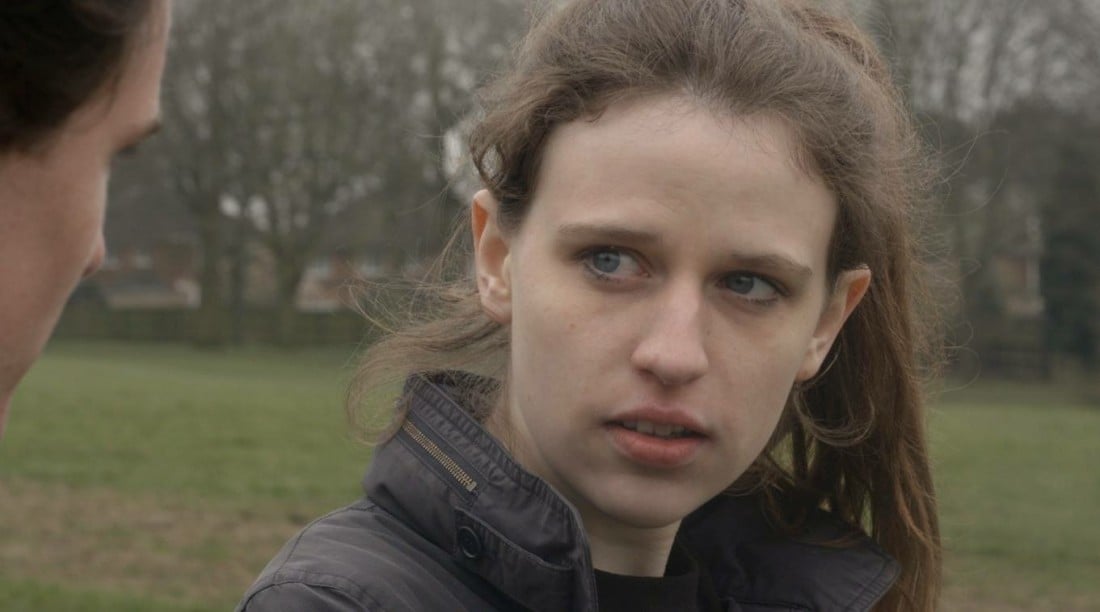Ellie Siora, Co-director
Filming Bench proved whimsical in every sense of the word: the experience was quirky, capricious and amusing, but also unpredictable and erratic. But amongst the (occasional) over-intrusive directing, the runaway shots, and the in-shot pedestrians – directing Bench was an inspiring experience.
During shooting – however cliché it sounds – what truly stuck out to me was the importance of collaboration. Every member of the crew and cast was essential to telling the story – the unseen artistry of boom-holders and script-markers cannot be underestimated. Not only technically, but also creatively, collaboration and a collective passion to shoot this film and shoot it well was the engine of the project. I came to realise that the ideas of the cast and crew were often better than my own, and that good directing is acknowledging and incorporating these ideas – rather than trying to shine as an individual creator.
A reoccurring joke on set was me and the first AD (David Williams) being like the angel and devil on the shoulder of my co-director (Tara Snelling). It felt like playing a game of cinematographic tug of war – striving to frame a shot to ‘perfection’ in the ether of artistic timelessness, against the practical need to actually produce our vision on a tight schedule.
So as the process of artistic decisions was a learning experience, so were the results of these decisions. When we first read the Bench script, we immediately saw its potential to comment on topics in current popular discussion – particularly mental health and gender roles in contemporary society, and how the two intersect. Using the main character Elizabeth (Imogen Allen) as a means to address the conversation around mental health conditions, we were particularly adamant to be as sensitive and as human as possible in our depiction.
Conducting research around the subject was a main priority in ensuring the film could approach the issues tactfully. The current filmography surrounding autism is primarily and almost exclusively focused on the male experience, particularly in blockbuster film culture such as Rainman, I am Sam or Cube to name but three. We felt the gender of the lead would prove elemental to film’s impact, which is why we chose to cast the main character as female.
Although officially autism is more common in boys than girls (1 in 42 compared to 1 in 189), recent researchers believe that this data is skewed due to how autism is identified. Professor Janet Treasure of KCL suggests around a fifth of cases of autism in girls remain undiagnosed – because perfectionism and exhibited rigidity is still considered an inherently ‘female’ trait. Director Beeban Kidron recently emphasised how “movies have the power to create a shared narrative experience and to shape memories and worldviews.” I hope Bench, even though only a short-film pulled together amongst multiple essay crises, can contribute to the conversation in some small but meaningful way.
Annie Hayter, Actor (“Claire”)
I had a wonderful time filming Bench – it was fantastic to work with such an enthused and lovely group of people for my first experience of acting in a short film. It was also exciting to be in a production that had, not only a female protagonist at its centre, but was led by two brilliant women as directors behind the camera, particularly as the film industry can be so male-dominated.
I played the role of Claire, best friend to the main character Elizabeth, and I think my favourite scene is a discussion between the two characters, shot beneath flickering fairy lights, bathing our faces in a blue glow. With that said, I also thoroughly enjoyed doing multiple takes of a scene where my character is running up and down the hill at South Parks, clad in a violet dressing gown, flapping in the wind.
Liv Grant, Editor and Co-producer
Film editing involves transforming the raw footage (500 clips in the case of Bench) into a sequence that tells a story and reflects the director’s vision as closely as possible. This is more complex than simply putting the clips into chronological order. It’s rather is a multi-step process that begins with choosing the best takes, then working closely with the director to select the best angles and where to cut the clips, and finally optimising the audio and colour-grading the film.
Editing really starts in the pre-production, with the director drawing a story board where they block a scene (i.e. decide where the actors will move) and also decide from which angles they want certain parts of the scene to be shot from. These early decisions will often change after the shoot, and editing becomes a very creative process which determines the rhythm and pace of the film.
Bench has been a great project to work on because it has been a very collaborative process between me and the two directors, which often results in three different opinions on how the film should look, and has involved editing sessions lasting up to 10 straight hours. I have been using Final Cut Pro X, as it is a professional-grade software that is also suitable for amateurs as it is very intuitive and easily learnt. Editing Bench has been an eye-opening experience, and definitely something I’d do again.
Bench premieres on Sunday of 3rd Week at the UPP, along with the other four OBA ‘Easter Project’ films



